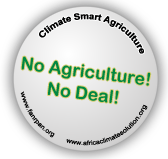 ACCID RSS newsfeed ACCID RSS newsfeed
How Malawi shows the importance of considering population, food, and climate together
29 October 2012, Population Media Center
The following six-minute video, featuring Kathleen Mogelgaard, a consultant to the Environmental Change and Security Program at the Wilson Center’s Environmental Security and Change Program. Here, she advocates for appropriate interventions to ensure access to contraceptive information and services as one (among many) viable and important strategies for helping to ensure food security around the world. Using Malawi as a case-study in this video, she successfully shows the linkages between population growth, climate change impacts on agriculture and food security.
Quantifying the role population plays in food security is “an incredibly powerful piece of information,” said Kathleen Mogelgaard in an interview with ECSP. Malawi is a case in point.
Mogelgaard saw the connections between food, population, and climate change firsthand on a recent trip to the South African country, whose population of 15 million is largely dependent on subsistence, rain-fed agriculture. “One in five children in Malawi is currently undernourished,” Mogelgaard said, and climate change paints a bleak picture for the future.
“With the change in climate – with increasing temperatures, with shifting rainfall patterns – this is having a significant effect on agricultural productivity in Malawi that farmers are already experiencing,” she said. The outlook for maize, for example, is that productivity will decline by 20 percent by 2030.
Reliance on subsistence agriculture makes accommodating more and more people a challenge via land scarcity, and the UN projects the country could grow from 15 million people today to between 45 and 55 million by mid-century.
“So when you think about the kinds of climate changes that are affecting agricultural production in Malawi, as well the population growth in Malawi, it raises a lot concerns for the future of food security,” she said.
Taking population into account, through programs that meet unmet need for contraceptives and empower women, could help policymakers and development agencies improve food security.
Modeling done by the Futures Group, which integrated a climate model, a population model, and a food security model to create scenarios for future development, shows the potential of an integrated look. “When this model was put into place in Ethiopia,” she said, “researchers found that a slower population growth path was something that would make up for the caloric shortfall that will be a result of climate change impacts on agriculture.” Slower population growth would also “cut the number of undernourished children in half.”
See here for the full story: http://www.newsecuritybeat.org/2012/10/kathleen-mogelgaard-malawi-shows-importance-population-food-security-climate-change/
|

